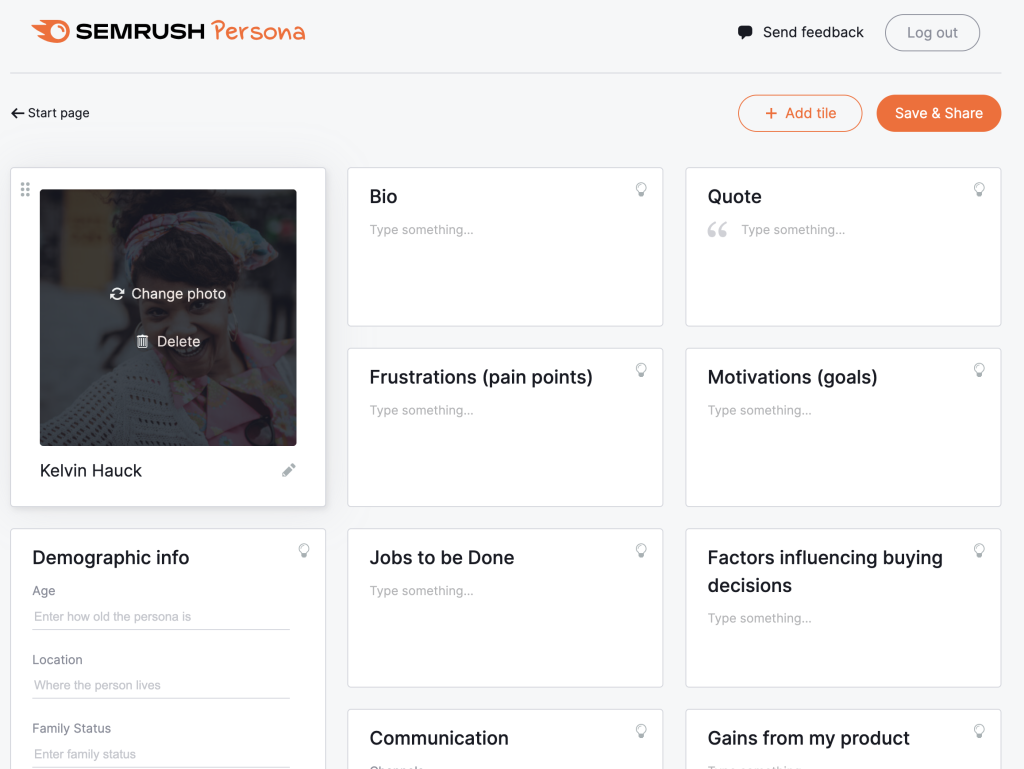What is a Product Strategy?
A product strategy is a plan for how your company will grow and evolve over time. It’s an important part of any startup, but it can be tricky to get right. This guide explains why you need a successful product strategy and how to create the first version of this one step by step. As a bonus, I show you an example of a strategy for Airbnb based on the described template. I hope it inspires you to create yours.
Why do you need a product strategy for your startup?
It helps everyone understand what’s going on
Your developers, sellers, customer support, and even investors. All of them want to figure out what is your next step. Strategy in your head is a great thing, but … The best way to understand what you are trying to achieve with your business is to clearly define it in writing. A product strategy helps you identify your target customers and their needs and gives you a clear idea of who you want to sell to. If you don’t have a clear vision of where you want to take your business, then you might end up making decisions that are not aligned with your goals.
Helps you to prioritize your roadmap
I know you have a lot of ideas to do. But which one should be next? There are a lot of mechanics for prioritization and ordering your hypothesis but they are useful until you don’t know what are you going to achieve. And once you figure out what is your strategy – you will throw half the tasks from your backlog. So, if you have no strategy, you’ll just keep doing things randomly. You won’t make progress because you don’t know where you’re heading. Product strategies help you to decide what features to build first and what ones to postpone.
Inspires your product team
Moreover, strategy is a motivational thing. Can you put your fate to a person who doesn’t know what to do? I worked in a company without a strategy in a software developer role and I couldn’t trust my manager when he wanted to fix something in our product. And I was not the only person with that opinion. Developers will understand how their features are connected with the business, clients, and money. They will trust you more and can focus on the development process and do their best to achieve your business goals. You may think that people already know what you are planning to do. But most likely, they don’t. Even if you have a good idea about your future plans, you still need to communicate with your product team and investors.
What are the Key Components of an Effective Product Strategy?
Usually, I split the main parts of a product strategy into 3 steps:
- Product basement. That is your idea and your thoughts about your business. What is the mission of your company? How your product could help anyone?
- Market. Your product does not exist in a vacuum. There are competitors and target audiences of course. Do you know who are they? Who are your target customers? Why would someone buy your product? What problems does your product solve? What value does it add to the world?
- Action plan. Now it is time to move from the thought to the action. What are your goals? What do we need to achieve them? Which milestones should we set?
Product strategy example for Airbnb
No one asked me about this – but the best way to explain is to give an example with step-by-step definition. So, let’s start from the beginning.
Product basement
Product vision
What is Airbnb? Airbnb is a platform where people rent rooms or apartments. You can find there anything from a spare room to a whole apartment or even a castle. So they are connecting people through travel. In our case, vision is a long-term mission of your company. As Brain Chesky(CEO of Airbnb) said in an interview, Airbnb exists to create a world where anyone can belong anywhere
Business model
There are a lot of ways to describe a business model. I personally prefer Alexander Osterwald’s Business Model Canvas with its outstanding questions. Miro has a very useful template for this. Airbnb is a marketplace, so we should create this model twice: for a traveler and for a host. Long story short, let’s build one from a traveler’s point of view:
- Key propositions: A lot of options to choose from, lower prices, cozy places, a chance to live like a local
- Customer segments: People who are looking for a place to stay for a short period of time, travelers, business travelers
- Customer relationships: Provide a high level of trust, support is available 24/7
- Channels: Paid Ads, Word of mouth, Referrals, SMM
- Key activities: Increase the number of places to stay, boost up the level of service
- Key partners: Owners of apartments(hosts), local photographers, insurance companies, traveler communities
- Key resources: Brand, 5.6m active listings, users across 220 countries, user data & algorithms, the engineering team
- Cost structure: Insurance, IT costs, Sales and Marketing, Research & Development
- Revenue streams: Service fees from bookings charged to both guests and hosts
So, we dumped information about our business and customers in broad strokes. Great job! Now you already can share and discuss it with your team or cofounder.
Market
Competitors
In the previous article, we have a detailed step-by-step guide on how to do competitor research. You need to understand the landscape of your target market. It will be great if you identify your gaps and find opportunities for your business. As a result, you should have a big Google sheet with competitor’s data that makes sense for you. Also, SWOT analysis could be a cherry on top of your competitor research. Here is my short instruction that will help you.
User personas
The second great part of market research is user research. You should talk to your users even before you have a prototype. User research is a complete science. I recommend you to read the book “The Mom Test: How to Talk to Customers & Learn If Your Business Is a Good Idea When Everyone Is Lying to You” as a starting point. As a result of this research, you should build several user personas. A user persona is a representation of your target audience. But be careful: persona is a result of your research, not of your imagination.
For this description you should include at least these factors:
- Age
- Education
- Goals
- Challenges, Pains
- Interests
- How do they spend their free time
- Income level
- Geo
Don’t forget about the photos. They create empathy and simplify your job in the future. I recommend you to use the free Semrush tool for persona building with embedded templates and photos.

Action plan
So at this point, we know what we want to achieve(vision) and what our context looks like(market). There is one more step: to identify product goals and initiatives to accomplish them
Goals
Now that we know what we want to achieve, we need to define clear goals. Depending on the level of your startup you should set different goals. We can’t say “I want to make money”. So, I recommend you set goals in a SMART format. Every goal should be:
- Specific – Set real numbers and time bounds. Don’t use phrases like “more”.
- Measurable – You should be able to track your product goal. Don’t use things that you can’t measure
- Attainable – A goal should be inspirable, but you should be able to achieve it
- Relevant – Your goals should align with your values and long-term objectives
- Time-bounded – Every task should have end-date
Examples
- Increase the number of hosts by 50% by the end of 2023
- Reduce CAC for business travelers by 25% by the end of Q2 2024
Initiatives:
You should also define some actions that will lead to your goals.
For example, if you want to increase the number of hosts, then you should focus on referral programs for hosts or special offers for this cohort of users. Maybe you need to run a property insurance company or any other perks. Initiatives are points on your product roadmap. If they are too complex they should be split into actionable tasks.
Conclusion
Congratulations! Now you have your own startup product strategy. Moreover, now you have a roadmap with features and growth points for your business. But you know what? Unfortunately, it is an ongoing process and now you should keep it actual for the rest of your life. There are no strategies written in stone. Especially for startups. So don’t get discouraged if something doesn’t work out. Just try again and again until you find the right formula for your business success.
Good luck!
Photo by Markus Winkler on Unsplash









